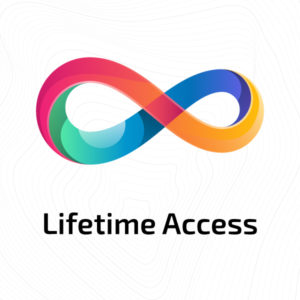AI’s Ascension in Banking: A Paradigm Shift
While AI’s roots can be traced back decades, its integration into the banking sector has gained remarkable momentum in recent years. Financial institutions and fintech companies are harnessing AI models to optimize various operations, ranging from loan eligibility assessments to fraud detection. However, as Zetser emphasizes, this is just the beginning of AI’s potential in the financial world.
The GPT AI Breakthrough
Zetser is at the forefront of highlighting the immense capabilities of Generative Pre-trained Transformers (GPT) AI, often referred to as GPT AI. GPT AI transcends traditional AI models by leveraging contextual understanding and machine learning to process vast amounts of data. One of its defining features, the transformer architecture, equips GPT AI with the ability to comprehend context and structure—a facet often overlooked but incredibly influential.
Empowering Financial Inclusion through GPT AI
Financial exclusion has long been a pressing concern, and Zetser believes that GPT AI could offer an effective solution. The integration of earned wage access and “buy now, pay later” systems in the financial ecosystem is propelled by data analysis. GPT AI’s prowess in processing alternative data and larger datasets enhances its effectiveness, a fact that Zetser argues many have undervalued.
Beyond Conventional Credit Assessment
GPT AI’s most impactful application, as Michael Zetser posits, lies in reshaping credit evaluation strategies. With traditional banks grappling to analyze data beyond standard credit scores, the transformer model emerges as a game-changer. GPT AI’s capacity to comprehend intricate patterns within extensive datasets promotes inclusivity, sidestepping biases that have historically influenced credit decisions.
Inclusive Data for Accurate Results
Addressing the pitfalls of biased AI, Zetser points out that GPT AI’s learning is reliant on the data it consumes. By incorporating diverse and inclusive datasets, developers can fine-tune the model, rectifying discriminatory tendencies. This augmentation ultimately yields more accurate results, reinforcing the potential of AI to drive fairer financial systems.
Demystifying Complex Financial Concepts
In addition to eliminating bias, GPT AI’s potential extends to fostering financial literacy. The technology’s aptitude for explaining complex ideas equips banks to educate customers about intricate contractual terms accompanying credit products. Furthermore, GPT AI can guide consumers toward suitable products tailored to their needs, leveling the playing field and fostering equity within the credit system.
The Dawn of AI Evolution
While AI’s initial integration witnessed its share of hiccups, Zetser is optimistic about the current state of AI models. Unlike their predecessors, contemporary AI systems like GPT AI transcend trend-spotting by incorporating alternative data. This innovation empowers both financial institutions, enhancing their risk assessment capabilities, and consumers, aiding them in informed decision-making.
In the era of digital transformation, Michael Zetser’s insights underscore the symbiotic relationship between AI and the banking sector. As GPT AI continues to unfurl its multifaceted capabilities, financial inclusion inches closer to becoming a reality. In Zetser’s vision, this technology doesn’t merely augment banking—it transforms it into a more inclusive, transparent, and equitable ecosystem for all.
Elevating the Banking Landscape: GPT AI’s Potential
Michael Zetser’s vision extends far beyond the immediate application of GPT AI in the financial sector. He envisions a future where this technology transcends conventional boundaries and catalyzes holistic changes within the industry. As AI becomes increasingly integrated into banking operations, its role evolves from being an auxiliary tool to a driving force for innovation.
A Holistic Shift in Risk Management
Risk management is a cornerstone of financial operations, and GPT AI’s capabilities offer a revolutionary approach. By sifting through diverse data points and identifying intricate patterns, GPT AI can provide financial institutions with unparalleled insights into potential risks. This proactive risk analysis empowers banks to make informed decisions, mitigating losses and fostering a more stable financial environment.
In addition to risk assessment, financial institutions can improve their compliance efforts by integrating PEP tools into their monitoring systems. These tools help identify politically exposed persons and high-risk entities, ensuring adherence to regulatory requirements and reducing exposure to financial crimes. By combining AI-driven analysis with PEP tools, organizations can streamline due diligence processes, strengthening security and transparency in financial operations.
Paving the Way for Personalized Banking
In the era of data-driven decision-making, personalization emerges as a key factor in customer satisfaction. Michael Zetser sees GPT AI as a catalyst for personalized banking experiences. By analyzing individual financial behaviors, GPT AI can suggest tailored financial products, investment opportunities, and strategies. This not only enhances customer engagement but also helps individuals make better financial choices aligned with their goals.
Human-AI Collaboration: A Harmonious Coexistence
As AI continues to infiltrate the banking sector, concerns about job displacement arise. However, Zetser dismisses the notion of AI as a threat to human jobs. Instead, he envisions a future where AI complements human capabilities, freeing professionals from repetitive tasks and enabling them to focus on higher-value endeavors. This synergy between AI and human expertise fosters an environment of innovation and efficiency.
The Ethical Imperative: Addressing Bias and Fairness
Addressing the historical biases entrenched in financial systems is a priority for Michael Zetser. He underscores the ethical imperative of leveraging GPT AI’s potential to eradicate biases from credit assessments and lending decisions. GPT AI’s transparency in explaining its decisions empowers financial institutions to identify and rectify biases, fostering a fairer and more inclusive credit landscape.
Challenges and Continued Evolution
While GPT AI presents transformative potential, Michael Zetser acknowledges that challenges persist. Fine-tuning AI models to ensure accurate and unbiased outcomes requires ongoing effort. Additionally, the responsible handling of sensitive financial data remains a paramount concern. However, Zetser remains optimistic, confident that collaboration between AI experts, policymakers, and industry leaders can overcome these obstacles.
Conclusion: A Future Redefined by GPT AI
In the dynamic realm of fintech, Michael Zetser’s insights illuminate a path toward a future where AI is not merely an accessory but an integral driver of progress. By harnessing the capabilities of GPT AI, financial institutions can enhance risk management, drive financial inclusion, and elevate customer experiences. As the banking sector continues to evolve, Zetser’s expertise and forward-thinking perspective serve as a guiding light, showing us that the fusion of AI and finance holds immense promise for a more equitable and prosperous future. With Zetser’s visionary approach, the horizon of possibilities expands, paving the way for a transformative journey into the new era of AI-powered banking.


![]() 7 minutes
7 minutes
































